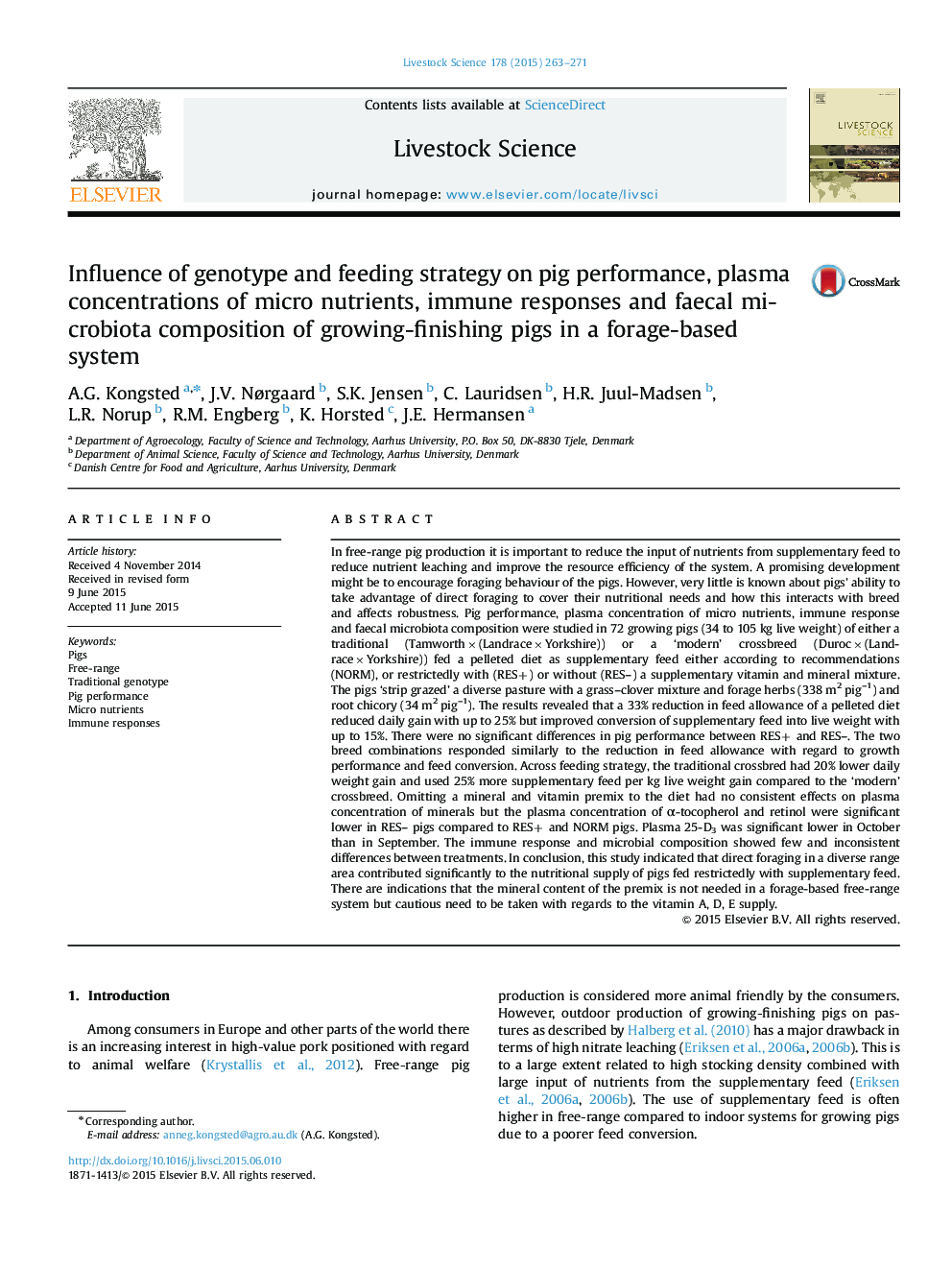| کد مقاله | کد نشریه | سال انتشار | مقاله انگلیسی | نسخه تمام متن |
|---|---|---|---|---|
| 2447086 | 1553954 | 2015 | 9 صفحه PDF | دانلود رایگان |
• Foraging in a diverse area contributed significantly to the energy supply of pigs.
• No consistent dietary effects on immune and microbial responses.
• No indications of enhanced robustness of a traditional pig breed.
In free-range pig production it is important to reduce the input of nutrients from supplementary feed to reduce nutrient leaching and improve the resource efficiency of the system. A promising development might be to encourage foraging behaviour of the pigs. However, very little is known about pigs' ability to take advantage of direct foraging to cover their nutritional needs and how this interacts with breed and affects robustness. Pig performance, plasma concentration of micro nutrients, immune response and faecal microbiota composition were studied in 72 growing pigs (34 to 105 kg live weight) of either a traditional (Tamworth×(Landrace×Yorkshire)) or a ‘modern’ crossbreed (Duroc×(Landrace×Yorkshire)) fed a pelleted diet as supplementary feed either according to recommendations (NORM), or restrictedly with (RES+) or without (RES–) a supplementary vitamin and mineral mixture. The pigs ‘strip grazed’ a diverse pasture with a grass–clover mixture and forage herbs (338 m2 pig–1) and root chicory (34 m2 pig–1). The results revealed that a 33% reduction in feed allowance of a pelleted diet reduced daily gain with up to 25% but improved conversion of supplementary feed into live weight with up to 15%. There were no significant differences in pig performance between RES+ and RES–. The two breed combinations responded similarly to the reduction in feed allowance with regard to growth performance and feed conversion. Across feeding strategy, the traditional crossbred had 20% lower daily weight gain and used 25% more supplementary feed per kg live weight gain compared to the ‘modern’ crossbreed. Omitting a mineral and vitamin premix to the diet had no consistent effects on plasma concentration of minerals but the plasma concentration of α-tocopherol and retinol were significant lower in RES– pigs compared to RES+ and NORM pigs. Plasma 25-D3 was significant lower in October than in September. The immune response and microbial composition showed few and inconsistent differences between treatments. In conclusion, this study indicated that direct foraging in a diverse range area contributed significantly to the nutritional supply of pigs fed restrictedly with supplementary feed. There are indications that the mineral content of the premix is not needed in a forage-based free-range system but cautious need to be taken with regards to the vitamin A, D, E supply.
Journal: Livestock Science - Volume 178, August 2015, Pages 263–271
